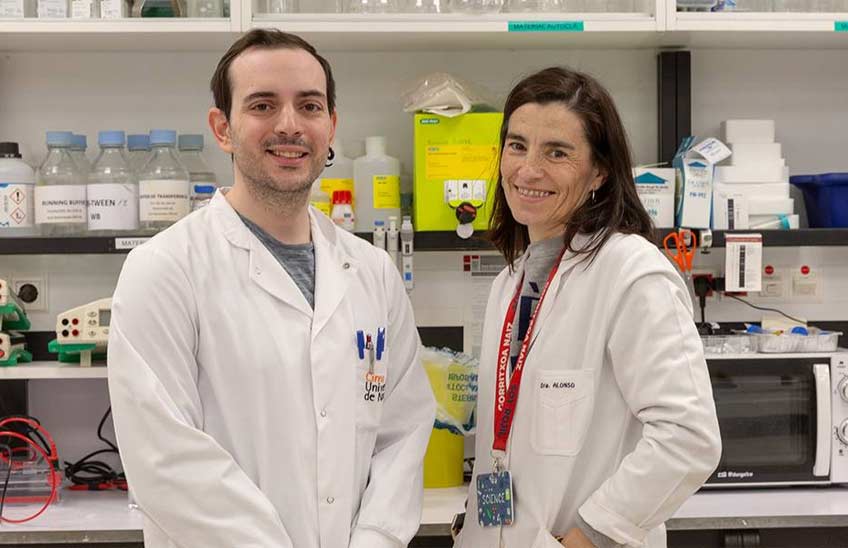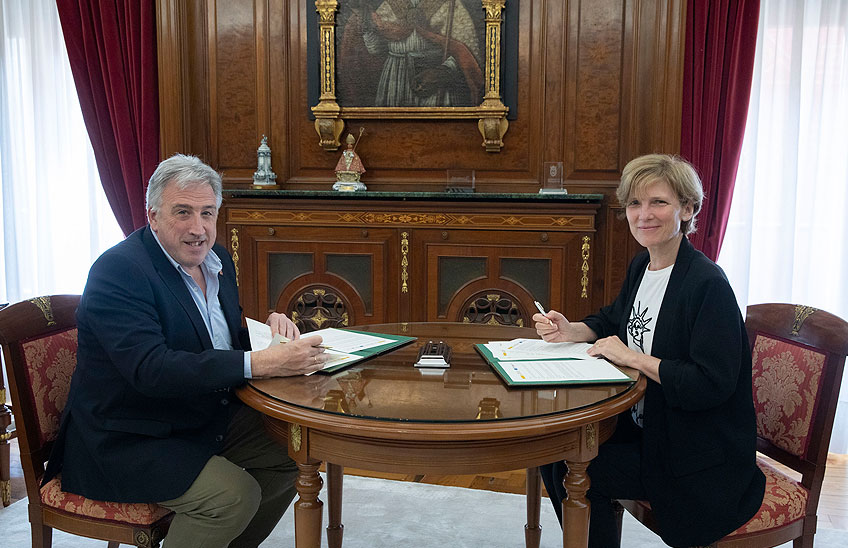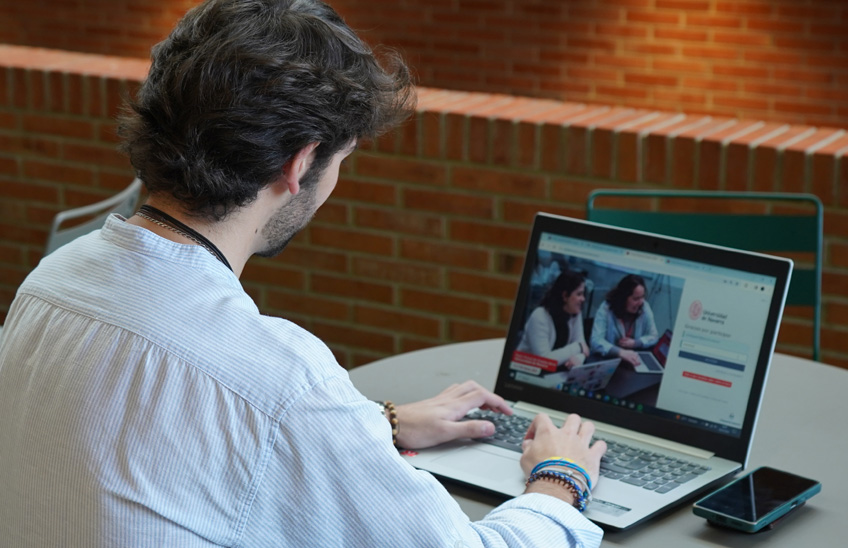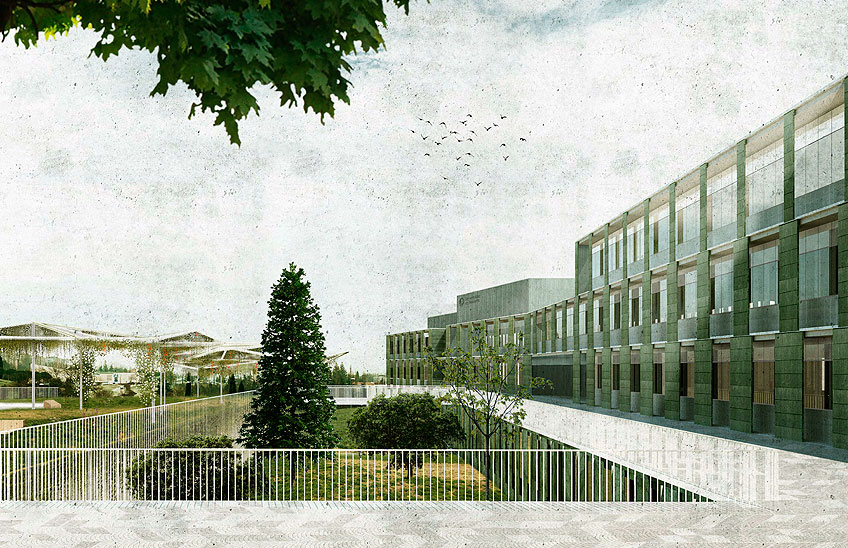20230304_CIE_inaki_echeverria
From the flow of people in a supermarket to the Seoul Halloween accident. Pedestrian dynamics to improve safety in public spaces.
The study conducted at the University has been applied to cases of space evacuations and social distancing during the Covid-19 pandemic.
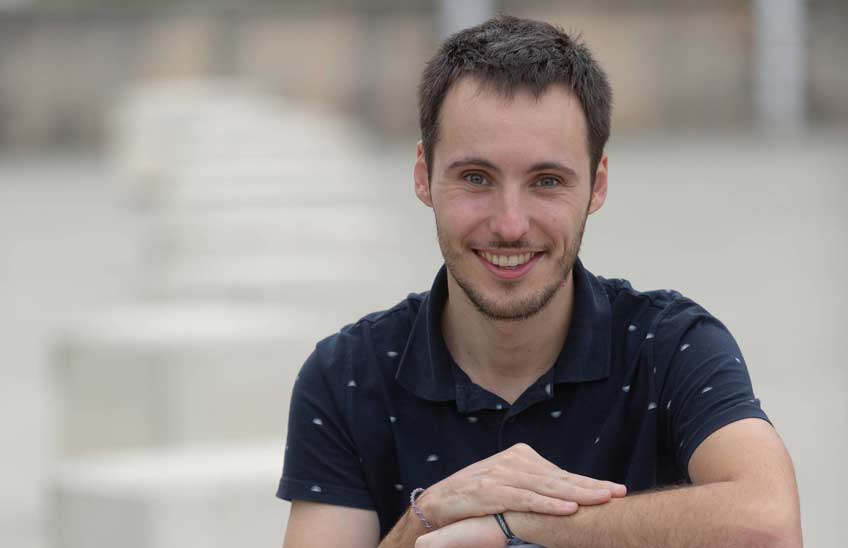
04 | 04 | 2023
Evacuation of a music concert at a bullfighting arena place . Crowding at an airport. Evacuation of a shopping mall after a fire. The customers of a supermarket with their shopping carts running back and forth. Thousands of people leaving a soccer stadium. Passersby coming and going through New York City. The stampede at a social demonstration in Paris. Crowds in the streets of the old part of Pamplona during the San Fermin festival. Some of these situations present a real risk of accidents, as already happened in the Madrid Arena in 2012 or a decade later in Seoul in the stampede during Halloween celebrations.
Pedestrian dynamics is the science that studies the flow of people walking in different situations. And it is the line of research that Iñaki Echeverría (Pamplona, 27 years old) has chosen for his doctoral thesis , directed by Dr. Iker Zuriguel and Dr. Raúl Cruz, professors at School of Sciences of the University of Navarra.
Dr. Echeverría's research has two clearly differentiated parts. On the one hand, the physicist from Navarre has studied evacuation processes, i.e., emergency situations that lead to the evacuation of a group of people from a space for safety reasons. To achieve this, he has carried out experiments with both students and the military, simulating an emergency exit from a room and placing an obstacle near the door (an idea proposal years ago by scientists who believed that the obstacle would absorb the pressure of pushing and shoving, thus avoiding traffic jams and favoring a more agile exit).
"Surprisingly, the presence of the obstacle did not make the evacuation faster or slower, but it did reduce the pressure during the experiments, preventing extremely high values from being reached and thus favoring the safety of the system," says Echeverría.
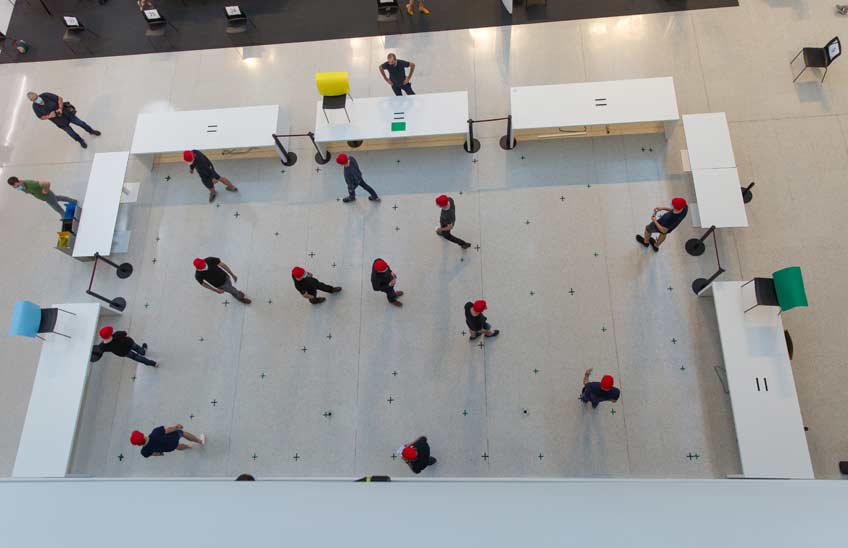
The other part of research, influenced by the social distancing imposed by governments in the face of the Covid-19 pandemic, led Iñaki to study the dynamics of pedestrians under a physical distance, in order to know what was the limit of people that could coexist in the same space while maintaining the social distance allowed, and how the speed of pedestrians could affect compliance with that safety distance.
"We were able to extrapolate a maximum capacity of 0.16 persons/m² to ensure a lower issue of approaches. We also found that walking faster increased the issue of infractions. And we also found that it was better to recommend a greater distance (2 meters instead of 1.5) to avoid dangerous approaches as we have a very clear tendency to overestimate the distance we keep from others," he adds.
For Iñaki Echeverría this subject programs of study have as goal increase the safety of people by offering tools that allow a better management of the spaces. Many questions remain to be answered, such as why the obstacle does not improve evacuation times, or how to predict the areas of greatest risk. This research will make it possible to establish new social norms for the population based on scientific criteria and could even contribute to improving the future design of cities.
Bibliographical references
→ Echeverría-Huarte, I., Garcimartín, A., Hidalgo, R. C., Martín-Gómez, C., & Zuriguel, I. (2021). Estimating density limits for walking pedestrians keeping a safe interpersonal distancing. Scientific reports, 11(1), 1-8. https://doi.org/10.1016/j.ssci.2019.09.014. https://doi.org/10.1016/j.ssci.2019.09.014
→ Zuriguel, I., Echeverria, I., Maza, D., Hidalgo, R. C., Martín-Gómez, C., & Garcimartín, A. (2020). Contact forces and dynamics of pedestrians evacuating a room: The column effect. Safety science, 121, 394-402. https://doi.org/10.1038/s41598-020-79454-0.


